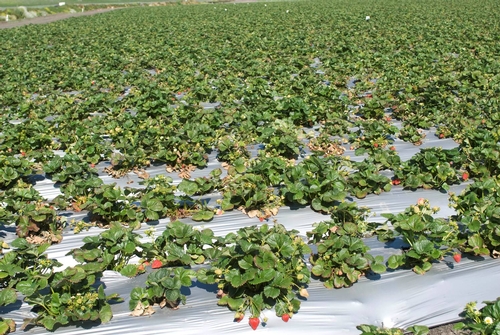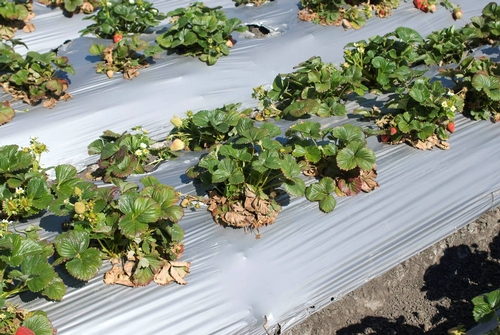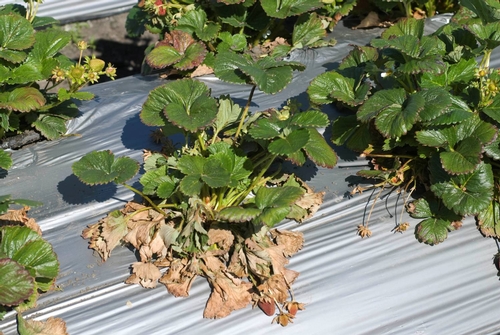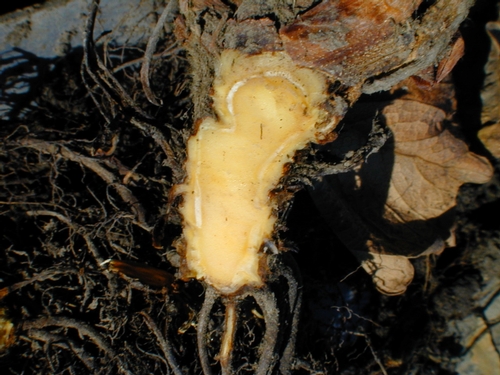In the past two weeks, growers have been reporting strawberry field situations in which plants are not growing well, are falling behind in size and production, and are showing symptoms of collapse. Initially the older leaves lose their normal bright green color and begin to turn a dull gray green. These leaves later wilt, collapse, and become brown and dry. Early in disease development, the wilting leaves often occur only on one side of the plant. Without exception, the dead and dying foliage is restricted to the outer, older parts of crowns and the inner younger leaves remain symptomless. Examination of the plants showed that roots were normal and not diseased. The internal crown tissue is likewise healthy in appearance and not discolored. In affected fields, symptomatic plants are randomly scattered throughout large sections of the planting.
Plants submitted to the UC Cooperative Extension diagnostic lab (supported in part by the California Strawberry Commission) were tested for a wide range of pathogens. All such samples tested positive for the Verticillium wilt pathogen (Verticillium dahliae) and were negative for Macrophomina, Fusarium, or other pathogens.
The confirmation of Verticillium wilt is, of course, a major concern for growers. Presently the only effective management options are to rotate and plant strawberry in locations that do not have infested soils and/or to fumigate with effective materials. Because V. dahliae can survive in the soil for many years, even in the absence of a plant host, the disease is a long-term concern for growers. A major concern is that as our industry moves away from methyl bromide-chloropicrin pre-plant fumigation, these Verticillium wilt situations may become more common.
The Verticillium pathogen survives in the soil by producing microscopic, resilient resting structures called microsclerotia. Because microsclerotia are in the soil, growers should be reminded that the movement of significant amounts of infested soil (via mud clinging to equipment and vehicles or by in-field disking) will move the pathogen to uninfested locations. Researchers also find that microsclerotia can be found in high numbers in old strawberry crop residues. Note that the strain of V. dahliae that infects strawberry can infect other plants such as lettuce.
Attached Images:

Photo Courtesy Steven Koike, UCCE. Overview of infested field.

Photo Courtesy Steven Koike, UCCE. Close up of infected plants.

Photo Courtesy Steven Koike, UCCE. Note wilting pattern of Verticilluim infected plant.

Photo Courtesy Thomas Flewell. Note how healthy the internal crown tissue appears, yet the plant was very much collapsed.